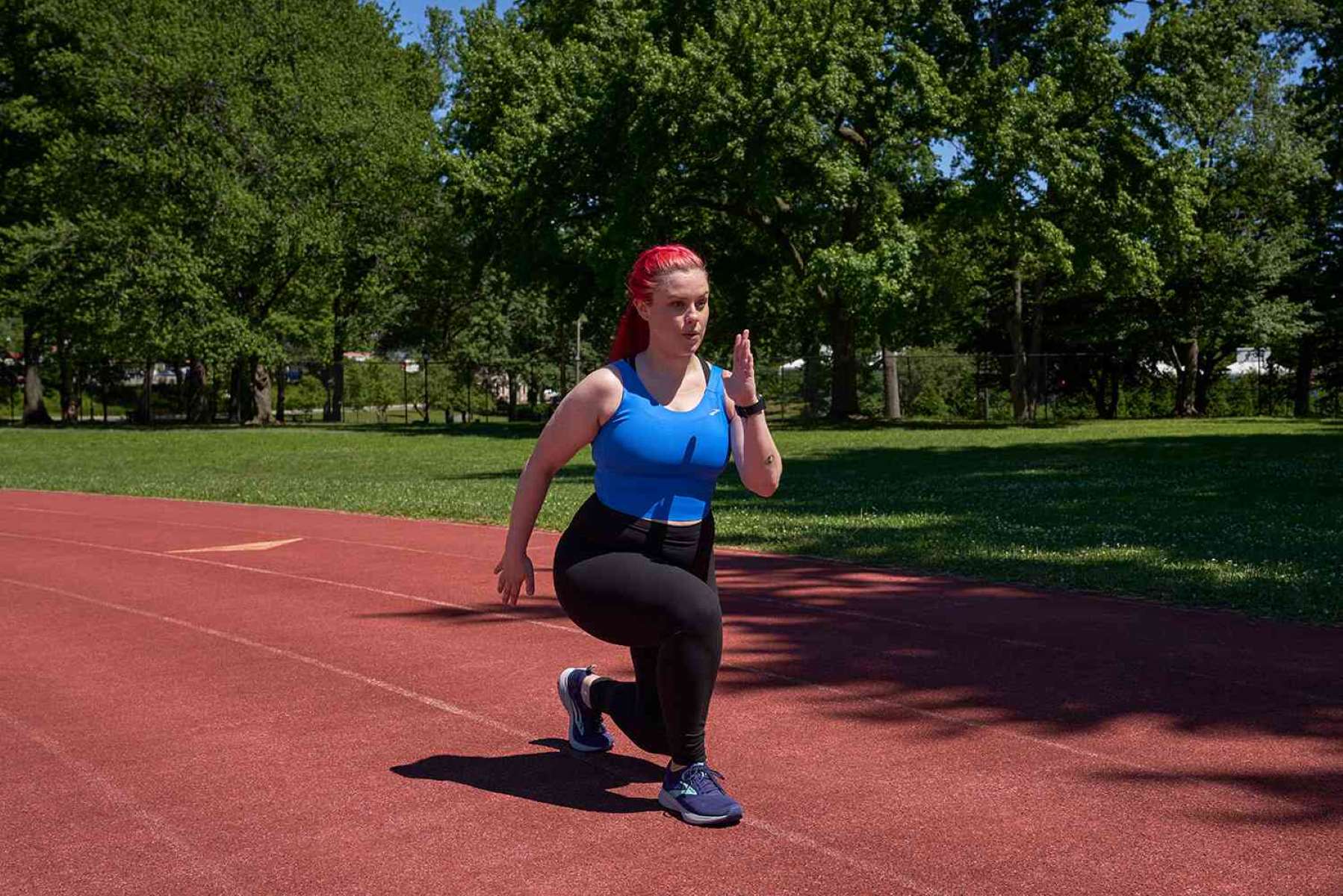Home>Misc>Featured>How Much High Intensity Interval Training Is Too Much?


Featured
How Much High Intensity Interval Training Is Too Much?
Modified: January 22, 2024
Find out the optimal amount of high-intensity interval training (HIIT) that can maximize your fitness gains without overexertion. Get featured advice on how much is too much.
Introduction
High Intensity Interval Training (HIIT) has become increasingly popular in recent years due to its effectiveness in maximizing workouts in a shorter amount of time. This type of training involves alternating periods of intense exercise with short recovery periods, challenging the body to push its limits and achieve optimal results.
With the growing popularity of HIIT, many fitness enthusiasts are wondering just how much is too much when it comes to incorporating HIIT into their fitness routine. While HIIT provides numerous benefits, it is essential to find the right balance to avoid overtraining and potential injury. Understanding the factors that influence HIIT frequency and recognizing the signs of overtraining are crucial elements in optimizing fitness and overall well-being.
Before diving into the details, it is important to note that everyone’s fitness level, goals, and recovery capacity vary. Therefore, it is essential to listen to your body and consult with a fitness professional when determining the appropriate amount of HIIT for your individual needs.
What is High Intensity Interval Training (HIIT)?
High Intensity Interval Training (HIIT) is a form of exercise that alternates between short bursts of intense activity and periods of active recovery. Typically, HIIT workouts last anywhere from 10 to 30 minutes and can be performed using various exercises such as sprinting, cycling, rowing, or bodyweight exercises.
The key aspect of HIIT is the intensity of the exercise intervals. During the high-intensity intervals, you push your body to its maximum capacity, reaching close to your heart rate maximum. This level of intensity helps to increase cardiovascular fitness, improve endurance, and burn calories more efficiently.
The active recovery periods in HIIT sessions allow the body to partially recover before the next intense interval. These recovery periods can be low-intensity exercises or complete rest, depending on the individual’s fitness level and goals. The alternating nature of HIIT allows for shorter workout durations while still delivering significant fitness benefits.
One of the main reasons for the effectiveness of HIIT is the afterburn effect, also known as excess post-exercise oxygen consumption (EPOC). After completing a HIIT workout, the body continues to burn calories at an elevated rate for several hours, even when at rest. This post-workout metabolic boost contributes to increased fat burning and calorie expenditure.
In addition to its fat-burning potential, HIIT offers a variety of other benefits. It has been shown to improve insulin sensitivity, cardiovascular health, and overall athletic performance. Additionally, HIIT workouts can be modified to suit different fitness levels, making it accessible to individuals of various abilities.
Benefits of High Intensity Interval Training (HIIT)
High Intensity Interval Training (HIIT) offers a wide range of benefits that make it an attractive exercise option for individuals looking to maximize their fitness gains. Here are some key advantages of incorporating HIIT into your workout routine:
- Efficient Time Use: One of the main benefits of HIIT is its time efficiency. HIIT workouts can be completed in a shorter amount of time compared to traditional cardio exercises while still delivering comparable or even greater results. This makes it ideal for busy individuals who are looking to get the most out of their workouts in limited time windows.
- Enhanced Fat Burning: HIIT is known for its ability to burn calories both during and after the workout. The high-intensity intervals push your body to work harder, resulting in an increased metabolic rate even after the session is over. This helps to promote fat loss and weight management.
- Improved Cardiovascular Fitness: HIIT improves cardiovascular endurance by challenging and strengthening the heart and lungs. The intense bursts of exercise followed by short recovery periods help to elevate heart rate and oxygen consumption, improving overall heart health and endurance.
- Preservation of Muscular Mass: Unlike steady-state cardio exercises, HIIT workouts prioritize the preservation of lean muscle mass. This is important for individuals who are looking to tone their bodies and increase overall strength. By incorporating resistance exercises within HIIT sessions, muscle can be built and maintained while burning calories.
- Increased Metabolic Rate: HIIT workouts have been shown to increase the body’s metabolic rate for several hours after the exercise, leading to greater calorie expenditure throughout the day. This can be beneficial for those aiming to lose weight or maintain a healthy body composition.
- Adaptable to Various Fitness Levels: HIIT workouts can be tailored to individual fitness levels, making it accessible to a wide range of people. The intensity and duration of the intervals can be modified to accommodate beginners, intermediate, and advanced fitness enthusiasts.
These benefits make HIIT an effective and versatile exercise method for individuals looking to improve their overall fitness, burn fat, and save time in their workout routine.
The Importance of Rest and Recovery
When it comes to High Intensity Interval Training (HIIT), it’s important to recognize that rest and recovery play a vital role in achieving optimal results. While the intensity of HIIT workouts is designed to push your limits, giving your body adequate time to recover is crucial for avoiding overtraining, reducing the risk of injury, and maximizing performance. Here are some reasons why rest and recovery are essential in HIIT:
- Muscle Repair and Growth: During HIIT workouts, the muscles undergo microscopic damage as they work hard to meet the demands of the intense intervals. Rest days allow the body to repair and rebuild these muscles, leading to increased strength, tone, and overall muscle growth.
- Prevention of Overtraining: HIIT puts significant stress on the body, both physically and mentally. Without adequate rest and recovery, this stress can accumulate, leading to overtraining. Overtraining can result in decreased performance, increased risk of injury, hormonal imbalances, and even mood disturbances. By incorporating rest days into your routine, you can prevent overtraining syndrome and allow your body to adapt and respond to the exercise.
- Injury Prevention: Intense workouts put extra strain on joints, tendons, and ligaments. Rest and recovery days allow these tissues to heal, reducing the risk of overuse injuries. Your body needs time to repair and strengthen these structures to support the demands of HIIT workouts.
- Restoring Energy Levels: HIIT workouts deplete energy stores in the body, including glycogen stores in the muscles and liver. Rest days allow these energy stores to replenish, ensuring that you have sufficient energy for your next intense workout.
- Mental Well-being: Intense exercise can be mentally taxing. Taking rest days provides an opportunity to recharge both physically and mentally. It can help reduce exercise-related stress, improve sleep quality, and maintain a healthy mental state.
- Performance Improvement: Rest and recovery are integral for improving performance in HIIT workouts. Giving your body time to recover allows for proper adaptation to the training stimulus, leading to better overall performance and fitness gains.
Remember that rest and recovery are not signs of weakness but essential components of a well-rounded fitness routine. Incorporating rest days, active recovery, and quality sleep into your HIIT training plan will help you achieve the desired results and maintain long-term fitness and health.
Factors to Consider when Determining HIIT Frequency
While High Intensity Interval Training (HIIT) offers numerous benefits, it’s important to find the right frequency that suits your individual needs and goals. Here are some factors to consider when determining how often you should incorporate HIIT into your fitness routine:
- Fitness Level: Your current fitness level plays a crucial role in determining the frequency of your HIIT workouts. If you are new to HIIT or have a lower fitness level, it’s important to start slowly and gradually increase the frequency over time. Beginners may benefit from one to two HIIT sessions per week, allowing ample time for rest and recovery.
- Training Intensity: The intensity of your HIIT workouts is another critical factor to consider. Higher-intensity sessions require more recovery time, so if you’re performing extremely intense intervals, it’s recommended to have more rest days between sessions. On the other hand, if you’re incorporating moderate-intensity intervals, you may be able to do HIIT workouts more frequently.
- Overall Training Volume: In addition to the intensity of individual HIIT sessions, the overall training volume of your workout routine is important to consider. If you’re already engaging in other high-intensity activities or strength training, you may need fewer HIIT sessions per week to allow for sufficient recovery. On the other hand, if your workout routine consists mainly of lower-intensity exercises, you may be able to handle a higher frequency of HIIT sessions.
- Recovery Capacity: Everyone’s recovery capacity is different, and it’s important to listen to your body and gauge how well you’re recovering between HIIT sessions. If you find that you’re consistently feeling fatigued, experiencing soreness, or not performing at your best, it may be an indication that you need more rest and recovery time. Be mindful of your body’s signals and adjust the frequency accordingly.
- Other Commitments: Consider your other commitments and lifestyle factors when determining the frequency of your HIIT workouts. If you have a physically demanding job, other sports or physical activities, or a busy schedule, you may need to reduce the frequency of HIIT sessions to prevent overtraining and allow for adequate rest.
- Individual Goals: Finally, your individual goals and preferences play a role in determining the frequency of HIIT workouts. If your primary goal is weight loss or improving cardiovascular fitness, incorporating two to four HIIT sessions per week may be appropriate. However, if your goal is to increase strength or build muscle, you may need to reduce HIIT frequency to allow for adequate recovery for strength training sessions.
Remember, finding the optimal HIIT frequency is highly individualized. It’s important to experiment, listen to your body, and make adjustments as needed to find the right balance that allows for progress, performance, and overall well-being.
Signs of Overtraining
While High Intensity Interval Training (HIIT) can be an effective way to improve fitness and achieve your goals, it’s essential to be aware of the signs of overtraining. Overtraining can lead to decreased performance, increased risk of injury, and hinder your progress. Here are some common signs that may indicate you’re overtraining:
- Chronic Fatigue: Feeling constantly tired and lacking energy, even after a good night’s sleep, can be a sign of overtraining. If you’re experiencing prolonged fatigue that doesn’t improve with rest, it’s a warning sign that your body may need more time to recover.
- Increased Resting Heart Rate: Monitoring your resting heart rate can provide insights into your recovery status. If you notice a consistent elevation in your resting heart rate over time, it could be an indication that you’re overtraining. An elevated heart rate at rest suggests that your body is in a constant state of stress and needs more recovery time.
- Decreased Performance: If you notice a decline in your performance during workouts, such as experiencing difficulty completing the same intensity or volume of exercise that was previously manageable, it may be a sign of overtraining. Overtraining can lead to a plateau or regression in performance rather than progression.
- Mood Disturbances: Overtraining can affect your mental well-being. If you’re feeling irritable, anxious, or experiencing mood swings more frequently, it may be a result of excessive training without proper recovery. Overtraining can disrupt hormone balance and negatively impact your mood and overall mental health.
- Recurrent Injuries: Overtraining places excessive stress on the body, increasing the risk of overuse injuries. If you find yourself experiencing a higher frequency of injuries, or if existing injuries are slow to heal, it may be an indication that you’re not allowing sufficient time for recovery between HIIT sessions.
- Insomnia or Disrupted Sleep: Overtraining can interfere with your sleep patterns. If you’re having difficulty falling asleep, staying asleep, or experiencing restless nights, it could be a sign of overtraining. Your body needs adequate restful sleep to recover and repair itself.
If you’re noticing any of these signs, it’s crucial to listen to your body and prioritize rest and recovery. Overtraining can hinder your progress and increase the risk of injury. If needed, reduce the frequency or intensity of your HIIT workouts, incorporate active recovery days, and prioritize quality sleep to allow your body to recover fully.
Finding the Right Balance: How Much HIIT is Too Much?
When it comes to High Intensity Interval Training (HIIT), finding the right balance is crucial for maximizing benefits and minimizing the risk of overtraining. While there is no one-size-fits-all answer, considering the following factors can help guide you in determining how much HIIT is too much for your individual needs:
- Listen to Your Body: Your body is a powerful indicator of whether you’re pushing yourself too hard. Pay attention to how you feel during and after your HIIT sessions. If you’re constantly fatigued, experiencing prolonged muscle soreness, or not recovering well between workouts, it may be a sign that you’re overdoing it.
- Assess Recovery: Assess how well you’re recovering between HIIT sessions. Are you feeling refreshed and ready to take on your next workout, or are you still feeling the effects of the previous session? If your performance is consistently compromised, it’s a sign that you’re not allowing sufficient recovery time. Adjust your HIIT frequency accordingly.
- Consider Other Training: Take into account other forms of exercise or physical activities you engage in. If you’re incorporating strength training, endurance workouts, or sports alongside your HIIT sessions, you may need to adjust the frequency of your HIIT workouts to avoid overtraining and ensure proper recovery for all aspects of your training regimen.
- Gradually Increase Intensity and Frequency: It’s important to gradually progress your HIIT workouts. Increase the intensity, duration, or frequency of your sessions gradually over time, allowing your body to adapt and recover. Rushing into intense HIIT workouts without proper conditioning can increase the risk of overtraining and injury.
- Consult with a Fitness Professional: If you’re unsure about how much HIIT is appropriate for you, consider consulting with a fitness professional. They can help assess your fitness level, goals, and recovery capacity to develop a personalized HIIT program that aligns with your needs.
- Individualize Your Approach: Remember that everyone is different, and there is no one-size-fits-all approach to HIIT frequency. Factors such as age, fitness level, underlying health conditions, and stress levels should also be considered. It’s crucial to prioritize quality sleep, adequate nutrition, and stress management along with your HIIT workouts to ensure overall well-being.
Finding the right balance between pushing your limits and allowing enough time for rest and recovery is key to optimizing your HIIT training. By listening to your body, considering various factors, and seeking guidance when needed, you can establish a sustainable and effective HIIT routine that supports your fitness goals.
Conclusion
High Intensity Interval Training (HIIT) is a powerful workout method that offers numerous benefits for improving fitness, burning calories, and increasing cardiovascular endurance. However, it is crucial to find the right balance when incorporating HIIT into your fitness routine to avoid overtraining and potential injury.
Factors such as your fitness level, training intensity, recovery capacity, and other commitments should be taken into consideration when determining the frequency of your HIIT workouts. Listening to your body, assessing your recovery, and gradually progressing your workouts are key elements in finding the optimal balance.
Signs of overtraining, such as chronic fatigue, decreased performance, and mood disturbances, should not be ignored. These are important signals that indicate the need for more rest and recovery. Prioritizing rest days, active recovery, and quality sleep will help ensure proper recovery and prevent overtraining.
Remember, there is no one-size-fits-all answer when it comes to the ideal frequency of HIIT workouts. It’s essential to customize your approach based on your individual goals, fitness level, and recovery capacity. Consulting with a fitness professional can provide valuable guidance tailored to your specific needs.
Incorporating HIIT into your fitness routine can be a highly effective way to achieve your health and fitness goals. By finding the right balance and considering all the relevant factors, you can optimize the benefits of HIIT while maintaining your overall well-being.









